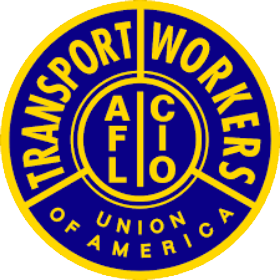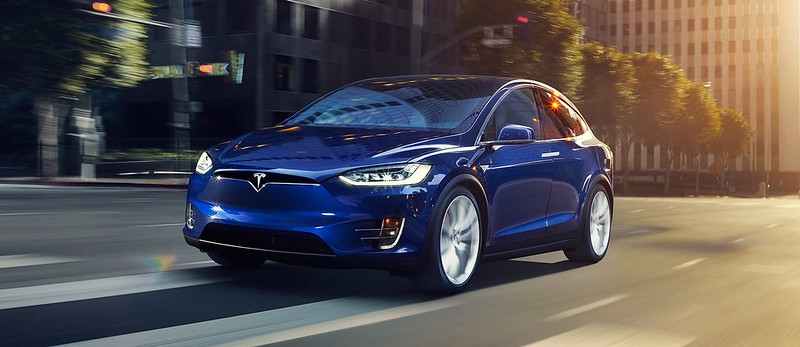This is the monthly edition of the Transport Workers Union’s Transportation Technology Newsletter. We aim to inform and educate our members, the labor movement, the public and policymakers about developments in transportation technology – and what the TWU is doing to ensure that new technology doesn’t undermine safety or harm the livelihoods of hard-working blue-collar workers. For suggestions and questions, please email ewytkind@gmail.com or adaugherty@twu.org.
ITEM OF THE MONTH
REPLACING TRANSIT WITH TESLAS: The Las Vegas Loop is expanding, with a new tunnel’s completion announced last week. But the PR bluster from Elon Musk and his Boring Company doesn’t change the reality that the loop is reliant on Teslas, despite the electric automaker’s continued safety issues with its so-called “autopilot” and “full self-driving” technology, faulty tech that has contributed to at least 467 crashes and 13 deaths. Musk owns both Tesla and the Boring Company.
“It is unfathomable to us that we would let the maker of the menacing ‘Autopilot” feature in Tesla cars that is facing yet another federal transportation safety investigation due to a high rate of crashes, infiltrate the transit industry and provide what appears to be automated service to Las Vegas visitors,” said TWU International President John Samuelsen. “This feels like another decision by politicians to let people serve as human crash dummies.”
Tesla itself acknowledges their autonomous technology is currently insufficient. Despite grand plans to ultimately build 68 miles of tunnels and 93 stations, Teslas must be driven manually by human operators on the current 1.7 mile loop. Jalopnik described the current loop setup as “dumb.” The current loop, which mostly serves to ferry visitors around the Las Vegas Convention Center campus, cost nearly $53 million to build.
And Tesla’s questionable tech continues to cause other issues. Extreme Tech reports that a Tesla Model 3 owner had his car attempt to drive itself in front of an oncoming train – twice. The owner was able to take control of his vehicle, but the repeated incidents while the Model 3 was in Full Self-Driving mode raise further questions about the automaker’s autonomous technology.
WHAT ELSE IS COOKING
CHANGES IN CALIFORNIA: A California Senate bill that would give local communities in California more control over the deployment of AVs has undergone extensive changes. Instead of giving cities and counties the ability to greenlight or stop AVs, the bill now prevents cities with more than 250,000 people from banning the safe operation of AVs if they enact an ordinance to further regulate the use of AVs. The TWU is still evaluating the changes made to the bill, which allows cities to cap the number of AVs deployed on roads but doesn’t allow cities to ban them outright if they so choose. The Senate recently passed the AV bill on a 26 to 9 vote and the state Assembly is considering the bill in committee. To become law, it will need to pass the Assembly before August 31 and be signed into law by the governor.
A second bill that requires a human operator on all commercial use vehicles weighing more than 10,001 pounds was not substantially changed by the California Legislature. The bill passed the Assembly on a 63-4 vote and is pending action in the Senate. It also needs to pass by the end of August and signed by the governor.
WRONG VOICE, WRONG TIME: TWU International President John Samuelsen objected to the testimony of Autonomous Vehicle Industry Association CEO Jeff Farrah at a recent Senate Commerce Committee hearing on roadway safety. The AV industry has repeatedly shown it values profits over safety.
“Autonomous Vehicles are a public safety menace on our roads,” Samuelsen said. “Protecting the traveling public outside of cars is an essential topic to address – but the AV industry has zero goods to back up their claims that driverless cars will lead to safer streets.” More on the hearing in Politico’s Morning Transportation.
REPORTS NEEDED: Sarah Fox and Nikolas Martelaro, researchers at Carnegie Mellon University and authors of a 2022 policy paper on automated public transit, recently told Politico’s Digital Future Daily newsletter that more reporting mechanisms are needed to better assess autonomous vehicles, particularly after the incident in San Francisco where a woman was dragged by a Cruise AV.
“One thing we have consistently wanted is more robust reporting mechanisms. I still haven’t seen a lot of improvement in that space. I’ll just put it that way. With the reporting around some of the incidents in San Francisco, it seems like reporting mechanisms were not particularly well thought through,” Fox told Politico.
Fox also added that Bus Operators and other transit workers play a critical role in the fabric of communities, addressing medical emergencies and serving populations who don’t have regular access to personal vehicles. “Bus operations is the oldest on average profession within transportation, and employs a large proportion of Black transit workers. It’s critical to think about the impact of this technology on the workforce and employability of trained operators,” Fox said.
A LONGER WAY TO SAY ‘BUS’: Uber recently announced a new “Uber Shuttle” service as a way to ferry passengers from high volume locations like airports and event venues on a larger, shared vehicle that is larger than a standard car. It’s not yet clear how widespread Uber Shuttles will be (previous attempts by the company at large-scale shared rides have fizzled) but The TWU will be watching closely to ensure that cities and transit agencies don’t see bigger Ubers as a replacement for transit bus services and operators.
Amazon’s Driverless Unit Zoox Facing Fed Probe: Yet another driverless car company – this time Amazon’s Zoox – faces a federal safety probe coming on the heels of a growing number of federal investigations including one involving the chaotic and unsafe rollout of robotaxis by Cruise, a GM company. The investigation of a fleet of 500 cars was launched by the National Highway Safety Administration after two Zoox driverless Toyotas slammed their brakes and were rear-ended by motorcyclists causing injuries. Zoox tests its vehicles in Las Vegas and Foster City, CA.
WAYMOS IN WASHINGTON: Waymo’s white Jaguars are now driving the streets of Washington, DC – beginning on-road testing in April. For now, the autonomous vehicle company is gathering data with test drivers. Fortunately, that means DC drivers and pedestrians won’t have to deal with idle Waymos blocking roadways for now since a human operator behind the wheel can move the car.
But, as San Francisco shows, the future isn’t exactly rosy. Waymos keep getting stuck in the same places.
WHAT WE’RE READING
Honda, Taxi Companies Partner on Driverless Service in Japan

